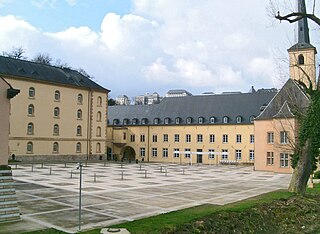Bezoek Luxemburg in 2 dags
13 must-see POIs, geoptimaliseerde routes en anekdotes.
Kaart laden...
Je gaat de mooiste bezienswaardigheden van Luxemburg bezoeken
2 Days in Luxembourg — A Tiny Capital with Monumental Charm
Luxembourg stole my heart the moment I stepped off the train. The city feels like a secret garden perched on cliffs. Its motto, "We want to remain what we are," whispers from old stone and modern glass. Some say it's overrated, but that misses the point. I came skeptical and left enchanted, notebook full and stomach happy from a tiny café by the Fishmarket.
Why visit? Because Luxembourg mixes medieval fortresses with sleek museums in a way few places do. Wander through echoing naves at Saint Michael's Church and Notre-Dame Cathedral. Stand in Guillaume II Square and feel the city's pulse between statues and cafés. You will taste buttery pastries, hear church bells spill over valleys, and see views that make you exhale. This is not only a list of landmarks. It is a feeling—cozy yet grand, intimate but full of surprises.
Planning a short trip can feel overwhelming. There is so much to see you could easily stay for weeks. If this is your first time in Luxembourg, you’ll wonder what to prioritize. I get it—time is tight and choices pressure you. That’s exactly why I created a compact Luxembourg itinerary designed to show you the best of the city in two full, soulful days. Below I map out 16 highlights, from cathedral halls to the Ministry of State façade, so you can focus on soaking it in instead of stressing.
Key tip: Start early at major sights and leave late for quiet streets. Morning light softens the ramparts and crowds are thin. That extra hour means better photos, calmer cathedral visits, and a slower pace that makes the city feel timeless. Trust me, Luxembourg rewards the patient traveler. Now let’s dive into the itinerary and make the most of your 2 days in Luxembourg!

Quick Mini Guide to Luxembourg
Where to stay:
- Ville Haute — central, walk to Notre‑Dame, Guillaume II Square and government buildings.
- Grund — atmospheric valley location, best for evening photos of the old fortifications.
- Near Gare — practical if arriving by train or doing day trips to Trier/Clervaux.
When to visit:
- Late spring or early autumn — mild weather, fewer river-valley mists and crowded viewpoints.
- Weekday mornings — quiet streets at Saint Michael’s Church and Fishmarket (excellent light for photos).
Things to do:
- Walk the Corniche and Fishmarket for the “most beautiful balcony of Europe” views into the Alzette gorge.
- Visit Notre‑Dame Cathedral and Saint Michael’s Church — note compact medieval layers and rooftop views.
- See Guillaume II Square (market on select days) and peek at the Ministry of State façade nearby.
- Book interactive tours: Secrets of Luxembourg for history in the old city; The Alchemist LUXEMBOURG for a gamified city hunt.
Don't forget:
- Public transport is free — use trams/buses to save time between hilltop and valleys.
- Good walking shoes for cobbles and steep stairs; charge your camera for panoramic shots.
- Reserve interactive tours in advance (limited spots) and check opening hours for churches/government buildings.
Dag 1 - Luxemburg
3 POIs te ontdekkenDag 1 - Ochtend à Luxemburg
3 Bezienswaardigheden - Duur : 1h45 - Afstand : 0.9 km - Wandelen : 0h11
Gëlle Fra
- Het 'Monument du Souvenir', ook bekend als 'Gëlle Fra' (wat 'Gouden Dame' betekent in het Luxemburgs), is een monument ter nagedachtenis aan Luxemburgse soldaten die tijdens de Wereldoorlogen en de Koreaanse Oorlog zijn gesneuveld.
- De populaire naam verwijst naar het gouden vrouwenbeeld dat door de obelisk wordt gedragen en dat vrede en patriottisme symboliseert; het monument herdenkt voornamelijk Luxemburgse soldaten die tijdens de Eerste Wereldoorlog in de Franse legers zijn gesneuveld.⭐Het monument bestaat uit een verhoogde vierkante basis die een 21 meter hoge obelisk draagt, met daarop het gouden beeld van een vrouw die een lauwerkrans uitsteekt.
- Voor de sokkel staan twee bronzen beelden: een zittende man die waakt over het lichaam van een gevallen kameraad.
- Tijdens de nazi-bezetting werd het standbeeld verwijderd en werd de sokkel vernietigd vanwege de francofiele symboliek, die de Duitse bezetters onwelgevallig was.
- Het monument werd uiteindelijk in oktober 1940 afgebroken.
- Na de Tweede Wereldoorlog verscheen het standbeeld weer voor een tentoonstelling in 1955, voordat het verdween tot 1981 toen het werd teruggevonden onder de tribunes van het Josy-Barthel stadion.
- Het gereconstrueerde monument werd in 1985 ingehuldigd.

Palais de Justice
- Het is een van de grootste gerechtsgebouwen van Europa.
- Het herbergt gerechtsgebouwen en rechtszalen.
- De bouw begon in 1835, voltooiing in 1848.
- De juridische bibliotheek is een van de meest uitgebreide in Europa.

place d'Armes
- Plaza de Armas is een populaire ontmoetingsplaats vol cafés en restaurants.
- Ooit gebruikt door de troepen van Lodewijk XIV. gebruikt als paradeplaats, nu worden er openbare concerten en de kerstmarkt gehouden.
- Cercle Cité, de voormalige Cercle Municipal, is omgebouwd tot congres- en expositiecentrum. het historische plein in het hart van de oude stad was ooit een paradeplaats voor de troepen die de stad verdedigden. de naam "Place d'Armes" herinnert aan het militaire verleden als verzamelplaats voor troepen en voor militaire ceremonies.
Dag 2 - Luxemburg
10 POIs te ontdekkenDag 2 - Ochtend à Luxemburg
5 Bezienswaardigheden - Duur : 3h15 - Afstand : 0.8 km - Wandelen : 0h11
Charlotte
- Het Groothertogin Charlotte Monument is een bronzen standbeeld ontworpen door de Franse beeldhouwer Jean Cardot.
- Het werd in 1990 opgericht ter ere van de voormalige groothertogin Charlotte van Luxemburg, die regeerde van 1919 tot 1964.
- Het monument werd officieel ingehuldigd op 29 april 1990, in aanwezigheid van de groothertogelijke familie.
- Het kunstwerk, dat ongeveer 2,75 m hoog is, staat op een platte ronde sokkel die rust op een plaatvormig voetstuk.
- Het beeldhouwwerk, uitgevoerd in vereenvoudigde vormen, toont de figuur gehuld in een wijde jas, met de rechterarm vooruitgestoken met de handpalm naar de hemel gericht alsof hij een groet brengt.
- Dit gebaar wordt geïnterpreteerd als een bedelende hand, waardoor de lokale bevolking het monument soms schertsend "Heeschefraa" ("bedelende vrouw") noemt.

Groothertogelijk Paleis
- Het Groothertogelijk Paleis van Luxemburg is de officiële residentie van de Groothertog van Luxemburg.
- De groothertogelijke familie woont in het kasteel van Berg, terwijl het Groothertogelijk Paleis wordt gebruikt voor officiële representatieve doeleinden.
- Een deel van het paleis wordt gebruikt voor officiële gelegenheden en staatsceremonies.
- Hoewel je het interieur niet kunt bezoeken, zijn de gevel en de architectuur indrukwekkend.

Cercle Municipal
- De Cercle Municipal, ook wel Cercle Cité genoemd, is een belangrijk gebouw in Luxemburg-stad dat oorspronkelijk bedoeld was als administratief gebouw. De ontwerpwedstrijd voor de bouw van het gebouw, gehouden in 1902, werd in 1904 gewonnen door vader en zoon Pierre en Paul Funck.
- Op de voorkant van het gebouw in neobarokke stijl is een fries te zien waarop de verlening van de stadsrechten aan Luxemburg-stad in 1244 is afgebeeld.
- Between 1952 en 1969 was de Cercle Municipal de locatie van het Hof van Justitie van de Europese Gemeenschap voor Kolen en Staal.
- Tijdens de COVID-19 pandemie in 2020 en 2021 werd het gebouw gebruikt als vergaderruimte voor de Kamer van Afgevaardigden vanwege opgelegde beperkingen.
- In 2006 transformeerden uitgebreide restauratiewerken de Cercle Municipal in een congres- en expositiecentrum, met verschillende verbeteringen en de toevoeging van een brug naar een aangrenzend gebouw om de faciliteiten uit te breiden, waarna het de naam Cercle-Cité kreeg.
Toevluchtsoord Sankt Maximin
- Tot februari 2017 zetel van het ministerie van Buitenlandse en Europese Zaken.
- Sinds juni 2019 zetel van het regeringsvoorzitterschap en hoofdkwartier van het ministerie van Staat.
- Opgericht in 963 door Siegfried van Luxemburg. 1751 Bouw van een barok gebouw met het opschrift "Refugium Abbatiae S.
- Bekende secularisaties in 1802, wordt privé-eigendom, daarna zetel van de regering..
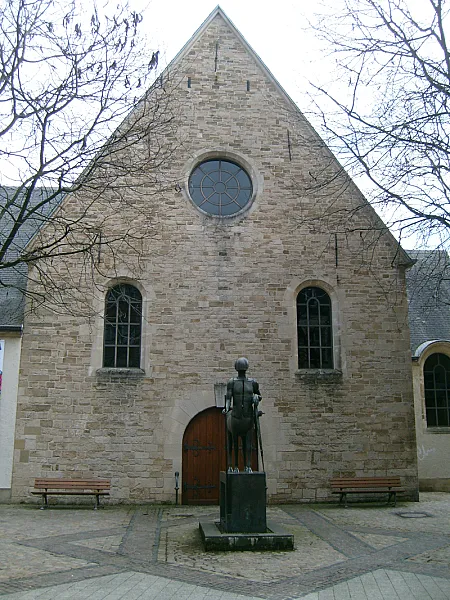
Théâtre des Capucins
- Théâtre des Capucins is een bekend theater in Luxemburg.
- Dit theater maakt deel uit van het netwerk Théâtres de la Ville de Luxembourg.
- De directeur van het theater is Frank Feitler.
- Het ligt in het hart van de oude binnenstad.
- Er worden voorstellingen gegeven in het Duits, Frans en Luxemburgs.
Dag 2 - Middag à Luxemburg
5 Bezienswaardigheden - Duur : 4h00 - Afstand : 0.8 km - Wandelen : 0h10.jpeg)
Kathedraal van Luxemburg
- De kathedraal Notre-Dame is de rooms-katholieke kathedraal van Luxemburg-stad en de enige kathedraal in Luxemburg.
- Het was oorspronkelijk een jezuïetenkerk. ⏰ De eerste steen werd gelegd in 1613 en de kathedraal werd uitgebreid tussen 1935 en 1938.
- De kathedraal Notre-Dame is een mengeling van laatgotische en renaissancearchitectuur en herbergt een miraculeus beeld van Onze-Lieve-Vrouw van Troost, de beschermheilige van de stad en de natie.
- De kathedraal heeft bijdragen van de Duitse beeldhouwer Daniel Muller, waaronder een orgeltribune en vroegbarokke engelen van albast.
- De kathedraal werd vijftig jaar na de bouw ingewijd als Onze-Lieve-Vrouwekerk en in 1870 door paus Pius IX verheven tot kathedraal.
- Op Goede Vrijdag, 5 april 1985, vloog de westelijke toren in brand waardoor de kathedraal aanzienlijke schade opliep.
- In oktober van hetzelfde jaar waren de reparaties voltooid.
- De crypte van de kathedraal is de laatste rustplaats voor de overblijfselen van groothertogen en groothertoginnen van Luxemburg.

Guillaume II plein
- Place Guillaume II is een centraal plein in Luxemburg, ook bekend als Knuedler in het Luxemburgs.
- Het ligt in de wijk Ville-Haute en is vernoemd naar Guillaume II, koning der Nederlanden en groothertog van Luxemburg.
- De geschiedenis van het plein gaat terug tot de 13e eeuw, met een franciscaner kerk en klooster.
- De Fransen confisqueerden het klooster in 1797 en het plein werd in de loop der decennia herbouwd.
- Het huidige neoklassieke stadhuis werd in 1830 gebouwd door architect Julien-Étienne Rémont en voltooid in 1838.
- In 1884 werd op het plein een ruiterstandbeeld ter ere van Willem II van Oranje-Nassau opgericht.
- Op de sokkel staan de wapenschilden van het Huis Oranje-Nassau en van de stad Luxemburg, evenals die van de twaalf kantons.
- Het plein biedt een prachtig uitzicht op het stadhuis, het groothertogelijk paleis en herbergt verschillende monumenten, waaronder het Renert Monument.
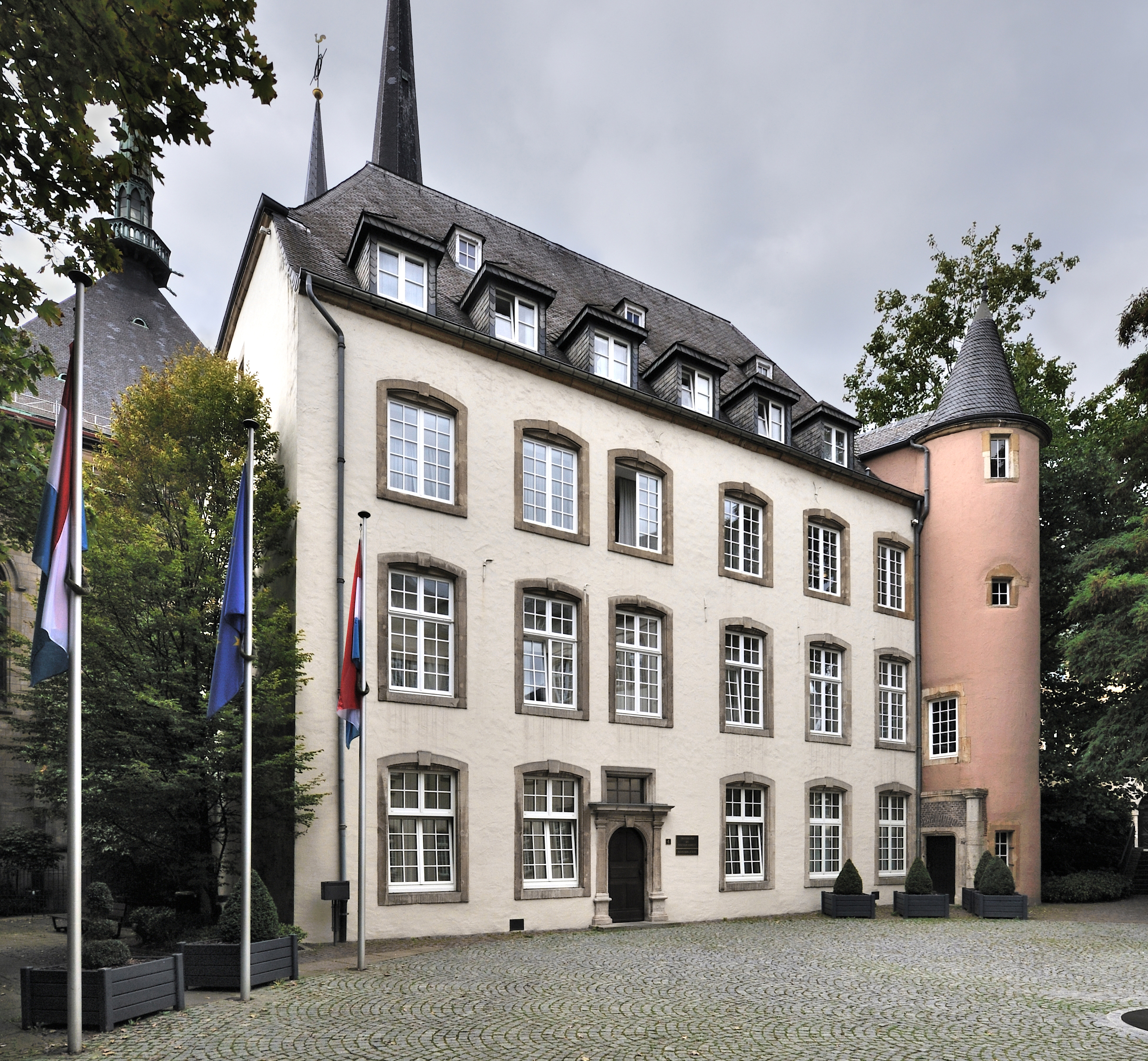
Ministerie van Staat
- Het ministerie van Staat van Luxemburg is een belangrijk regeringsorgaan.
- Aan het hoofd staat de premier van Luxemburg, die ook de regeringsleider is.
- Het is verantwoordelijk voor de coördinatie van het beleid en de besluitvorming van de regering.
- Het speelt een belangrijke rol bij de vertegenwoordiging van het land in internationale aangelegenheden.
- Het bestuurt de regering en werkt nauw samen met andere ministeries.

Musée National d'Histoire et d'Art
- Het Nationaal Museum voor Geschiedenis en Kunst (MNHA) is gewijd aan het tentoonstellen van kunstwerken en artefacten uit alle tijdperken van de Luxemburgse geschiedenis.
- Het eerste voorstel voor een dergelijk museum werd gedaan tijdens de Franse bezetting van de Revolutionaire Oorlogen, maar het museum werd nooit geopend.
- De verantwoordelijkheid voor het onderhoud van een collectie historische oudheden werd in 1845 overgenomen door de 'Vereniging voor de Studie en het Behoud van Historische Monumenten in het Groothertogdom Luxemburg'.
- In 1939 verhuisde het museum zijn collecties om ze veilig te stellen vanwege het begin van de Tweede Wereldoorlog.
- Het museum verwierf 3500 voorwerpen tijdens de nazi-bezetting, van 1940 tot 1945.
- In 1988 werd het museum opgesplitst in het Nationaal Museum voor Geschiedenis en Kunst en het Nationaal Natuurhistorisch Museum.
- In 2002 werd het museum uitgebreid met een nieuw gebouw ontworpen door Christian Bauer et Associés.

Abdij van Neumünster
- De abdij van Neimënster is een voormalig klooster van de Benedictijner monniken uit de 17e eeuw.
- Na een brand in 1684 werd de abdij in 1688 herbouwd en in 1720 vergroot.
- Na de Franse Revolutie werd de abdij gebruikt voor niet-klerikale doeleinden: Gevangenis, politiebureau, daarna Pruisische kazerne na de nederlaag van Napoleon in 1815, daarna staatsgevangenis in 1867.
- Sinds 1977 is de abdij het Centre Culturel de Rencontre Abbaye de Neimënster (CCRN).
- Het huisvest het Europees Instituut voor Culturele Routes.
- Op 25 april 2005 werd in de abdij het Verdrag betreffende de toetreding van Bulgarije en Roemenië tot de Europese Unie ondertekend.
Where to Stay in Luxembourg
Location matters in Luxembourg because the city is small but vertically dramatic: you often move between the high town and the valleys, and minutes can feel like a world when stairs and bridges are involved. For a two-day visit, choose a base that keeps your walking distances short to the sights you care about, allows easy arrival and departure, and suits your tolerance for hills. Think of your neighbourhood choice as a way to trade minutes for atmosphere — a few extra steps can put you in a postcard setting.
The city is organised around the historic upper town and the lower river valleys. The compact core around the cathedral and the main square is where civic life has long centred, while the Alzette valley and the riverside quarters have a quieter, more intimate feel. If you’re planning to visit Saint Michael’s Church, Luxembourg and the Fishmarket, you’ll appreciate being close to the riverside promenades; if Notre-Dame Cathedral, Guillaume II Square and the Ministry of State are your priorities, staying in the upper town saves time and lets you step outside into grand squares and pedestrian streets.
For most visitors I recommend focusing on two complementary areas. Ville Haute places you within easy reach of the Ville Haute landmarks like Notre-Dame Cathedral and Guillaume II Square and keeps official buildings such as the Ministry of State within a short walk. For atmosphere, the lower quarter around the Alzette — the Grund and the Fishmarket area — offers picturesque streets, river views and close access to Saint Michael’s Church, Luxembourg. If you value transport connections, consider staying near the Gare so trains and buses are immediately at hand.
Transport in Luxembourg is unusually straightforward: the central city is extremely walkable but also served by frequent buses and a network of funiculars, lifts and pedestrian bridges that make steep parts manageable. Public transport across the country is free, which is handy for short hops or arriving from the airport; taxis and bike rentals are also plentiful if you want to save your legs after a day of sightseeing. Keep in mind some streets are steep and cobbled, so check whether your accommodation has an elevator if stairs are a concern.
Finally, relax about the choice: for two days pick the vibe you want — history and squares in the upper town or charm and river views in the lower quarter — and prioritise proximity to your top sights. Book a place with clear arrival instructions and at least decent luggage access, and you’ll spend your time enjoying Saint Michael’s Church, the Fishmarket, Notre-Dame Cathedral and Guillaume II Square rather than worrying about getting back to your room.
Getting Around Luxembourg
Getting around Luxembourg is one of the pleasant surprises of visiting Europe: the network is compact, punctual and very easy to use even if you’re here for just a couple of days. The city is served by the national train operator CFL, a neat network of bus lines and the modern tram — in the centre everything feels within reach. Because the system is small and well signed, you won’t need to wrestle with complicated transfers; route maps are clear, stops are frequent, and announcements are often bilingual, so you can relax and enjoy the views as you travel. 🚇
A practical tip about fares and paperwork: since March 2020 most public transport within Luxembourg is free public transport — that means buses, trams and domestic trains generally require no ticket. That said, if you’re planning cross-border trips into Germany, France or Belgium you’ll need to buy an international ticket, so check before you hop on. If you prefer a physical guide, the Luxembourg Card can be handy for tourists who want museum discounts and organised excursions, but it’s optional for getting around the city itself. 🎫
When it comes to navigation I rely on Google Maps and the CFL app in tandem: Google does a great job showing walking times, tram stops and where to change, while CFL gives live train info and platform details. Search the place name, pick "transit" and you’ll see clear options — some are a short walk, others a quick tram ride. For unexpected schedule changes, the apps update in real time, which makes it easy to stay flexible and enjoy your day without stress. 🗺️
Money-wise, Luxembourg is a breath of fresh air: because local transport is free you’ll save on the usual transit card expenses, leaving you more to spend on food, a museum or a cozy café. Consider using the city’s Park & Ride facilities if you arrive by car, and avoid taxis for short hops in the centre — public transport or a brisk walk will usually be faster and far cheaper.
On my last visit we decided to explore between Saint Michael's Church and the Fishmarket before heading to Notre-Dame Cathedral. Instead of waiting for a bus we walked the charming cobbled lanes, popped down a viewpoint staircase, and reached the Fishmarket in ten minutes — then took a two-stop tram to Notre-Dame to save time before a museum opening. That mix of walking and a single short ride is exactly why Luxembourg’s transport feels so effortless: you can improvise, enjoy the city and always find a quick, reliable way to your next stop.
What to Pack for Luxembourg
Short trip, big history — Luxembourg’s compact old town and cathedral-lined streets invite long, slow wandering. On my last 48-hour visit I was out for 10+ hours each day, climbed the casemates steps, and walked about 12 miles total. Here are the essentials I actually used and why each one mattered in real situations.
1. Comfortable walking shoes (Merrell Moab 2 or similar): I wore my Merrell Moab 2s and they saved my feet on cobblestones and steep staircases — I logged roughly 12 miles across Luxembourg City in one day. Stiff soles protect your arches on uneven pavements and the grippy tread stops me slipping on damp stone near the fortifications. Don’t bring new shoes — break them in first.
2. Cross-body bag: I carried a medium cross-body with a zip and RFID pocket for my passport and camera. It keeps valuables close in crowded squares and inside churches when I sat quietly for 20–30 minutes. A bag that sits across your chest is much easier to manage on stairs and avoids the shoulder strain of a tote when you’re out 10+ hours.
3. Weather-appropriate layers (light waterproof jacket + scarf): Luxembourg weather flips quickly — during one morning I had sun, by afternoon a light rain and chill. I layered a thin fleece under a packable waterproof jacket and used a scarf for warmth in cool churches. Layers let you be comfortable sitting quietly in a cathedral or walking briskly along the Alzette valley.
4. Power adapter (Type C/E, 230V) and a short USB-C cable: Plugs are Type C/E and the voltage is 230V — I forgot this once and had to hunt for an adapter before evening photography. A small travel adapter plus a short cable lets you recharge in small guesthouse rooms between visits to Notre-Dame Cathedral and the Grand Ducal Palace.
5. Power bank (10,000–20,000 mAh): My 10,000 mAh power bank gave me one full phone charge plus camera battery top-ups during a long day of photographing stained glass and city views. When I missed a cab or extended a visit in a church, having juice for maps and photos was a literal lifesaver.
6. Optional — lightweight scarf (for church modesty) & pocket notebook: I always keep a thin scarf to cover shoulders if needed in sacred spaces and a small notebook to jot down names of churches, quiet moments, or service times. Both are small but made the difference between respectful entry and scrambling to cover up or losing a memory.
Enjoy Your Trip to Luxembourg!
In two vibrant days you'll explore 16 lively spots across Luxembourg, from the medieval charm of Saint Michael's Church and the lively Fishmarket to the soaring Notre-Dame Cathedral. This itinerary is packed with history, culture and cathedral visits, giving you everything you need to taste the city's highlights, stroll its fortifications and feel its warm atmosphere.
Remember, this is a guide, not a rigid schedule — leave room for the unexpected. The real magic in Luxembourg often comes from unplanned moments: getting pleasantly lost in Grund, stumbling on a quiet chapel, or pausing for a spontaneous café stop after Fishmarket. Don't feel pressured to see EVERYTHING; wandering and small discoveries often become the richest memories. Take time to breathe and savor.
I hope you fall in love with Luxembourg's layers of history and its cozy corners. I'm excited for you to wander the casemates, light-filled cathedrals and riverside paths — you're going to have an amazing time and create unforgettable memories that you'll cherish long after you leave.
Want a playful way to explore? Check out Coddy tours like Secrets of Luxembourg and The Alchemist LUXEMBOURG — gamified city adventures that turn sightseeing into puzzles and stories. They're a fun, low-pressure way to discover hidden corners and learn local history while you play.
Have an incredible two days — take photos, ask questions, taste local treats, and share your stories when you get back. Safe travels!
Wil je meer avontuur?
Ontdek onze stedelijke escape games om je bezoek om te toveren tot een interactief avontuur!














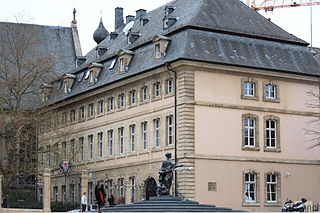


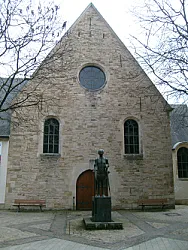
.jpeg/320px-Luxembourg_City_Eurotrip_(133169443).jpeg)



